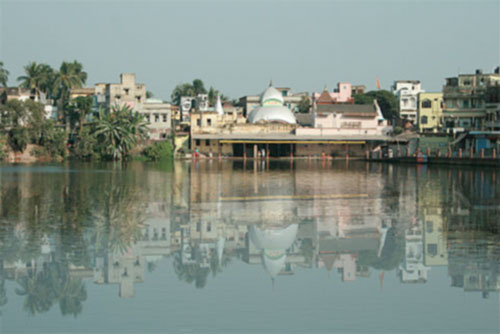 The close connection between dreaming and healing has a long and venerable history in Western civilization. The ancient Greek healing god Asclepius was worshipped throughout the Mediterranean for many centuries, with people praying to the god for dreams to help cure their physical and psychological suffering. The dream practices at the Asclepian temples became the deep spiritual basis for the Western medical tradition that many of us rely on today, although this fact is rarely acknowledged or appreciated.
The close connection between dreaming and healing has a long and venerable history in Western civilization. The ancient Greek healing god Asclepius was worshipped throughout the Mediterranean for many centuries, with people praying to the god for dreams to help cure their physical and psychological suffering. The dream practices at the Asclepian temples became the deep spiritual basis for the Western medical tradition that many of us rely on today, although this fact is rarely acknowledged or appreciated.
Recently I had an opportunity to talk with Dr. June McDaniel, Professor of Religious Studies at the College of Charleston, about dreams and healing. Dr. McDaniel has expertise in the study of Hinduism and mystical experience, and she has done extensive field work among Hindu worship communities in West Bengal. We were both attending the recent conference of the American Academy of Religion, for a panel discussion of my Big Dreams book, and in her comments she offered a fascinating glimpse of her findings among contemporary West Bengali Hindus:
“One of the most famous dream incubation temples in India is in Tarakeshwar in West Bengal- it was even the subject of a Bollywood film. Crowds of people visit this temple to have big dreams, and the major goal is the miraculous healing of disease or misfortune. People fast and bring the Bengali equivalent of sleeping bags to sleep at the temple before the statue of the god Shiva Taraknath, who will appear in dreams to directly heal the person, or inform them of what to do (which is usually to find particular herbs or go on a pilgrimage). I spoke with some people there who were coming to thank the god for appearing in their dreams and helping them. Some people will go to ask the god for favors (such as having a son or getting a better job), and the god will appear in the dream to let them know his answer. Some had a series of dreams in which the god appeared.”
Dr. McDaniel’s description has remarkable similarities to the dream practices performed at the temples of Asclepius. This suggests a truly cross-cultural recognition of the potential value of dreaming in efforts to heal people of their ills. In West Bengal these practices are still an active part of people’s lives, as Dr. McDaniel found in her interviews with numerous healers and religious leaders. I will be talking with her in more detail about this over the coming year, because findings like hers highlight a vital point: the future of dreams and healing depends in large part on learning the lessons taught by religious and spiritual traditions for thousands of years. We do not have to perform other people’s rituals or worship their gods to recognize in their engagements with dreaming a shared set of interests and a potential storehouse of accumulated wisdom.

